Vote No on AB 942: Defend Rooftop Solar Affordability
Redwood Energy reports on Clean Coalition’s expert commentary, warning that AB 942 threatens rooftop solar affordability and undermines the clean‑energy transition
Read article
Bringing communities an unparalleled trifecta of economic, environmental, and resilience benefits
A Community Microgrid is a coordinated local grid area served by one or more distribution substations and supported by high penetrations of local renewables and other distributed energy resources (DER), such as energy storage and demand response.
Community Microgrids represent a new approach for designing and operating the electric grid, relying heavily on DER to achieve a more sustainable, secure, and cost-effective energy system while providing indefinite, renewables-driven backup power for prioritized loads. Community Microgrids provide communities unparalleled economic, environmental, and resilience benefits.
We have the technology to widely deploy Community Microgrids, but we need to advance policies and market mechanisms to unleash this untapped market.
Deploying a true Community Microgrid requires utility cooperation, which has been slow to come. The Redwood Coast Airport Microgrid (RCAM), being staged in Northern California in partnership with Pacific Gas & Electric (PG&E), provides an example of the what can be done with utility cooperation.
RCAM, the first front-of-meter (FOM), multi-customer microgrid in Northern California, is staging to be the leading Community Microgrid showcase in California — and potentially the country. RCAM will provide lessons that can inform future Community Microgrid projects, such as a potential microgrid tariff.
To achieve our Community Microgrid vision, the Clean Coalition is designing and staging numerous Solar Microgrids at critical community facilities, which will be ready to connect to larger Community Microgrids when they are available. Many of these Solar Microgrids are in the Goleta Load Pocket in the Santa Barbara region of Southern California, such as the Solar Microgrids we are staging for the Santa Barbara Unified School District (SBUSD). See more on our Community Microgrid and Solar Microgrid work here.
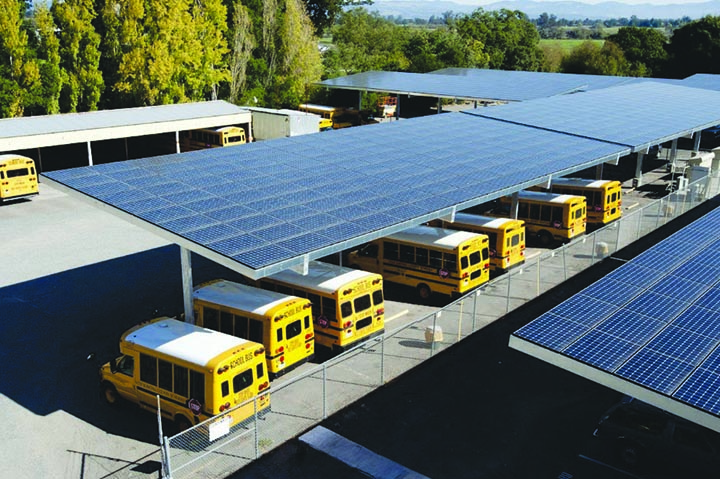
Community Microgrids, as their name implies, serve entire communities. They provide numerous benefits to those communities, and to the electric grid — and they differ in many respects from traditional microgrids:
| Feature | Community Microgrid | Traditional microgrid |
|---|---|---|
| Scale | Spans an entire substation grid area, benefitting thousands of customers. | Covers a single customer location or a small number of adjacent locations. |
| DER location | Usually installed in front of the meter (on the side of the electric grid). | Usually installed behind the meter (on the owner’s property) |
| Cost | Lowers costs by identifying optimal DER locations, deploying DER more broadly, and providing scalability. | Maximizes benefits for a single customer and does little for the grid. Replicating is very expensive. |
| Resilience, security | Provides indefinite backup power to prioritized loads that are critical to an entire community. | Provides limited backup power to only a single location or customer. |
| Scalability | Enables easy replication and scaling across any distribution grid area. | Requires tedious work to implement at each individual location. |
Traditional microgrids focus on single customers:

Community Microgrids cover an entire distribution substation grid area and serve thousands of customers:

Serving as models for modernizing America’s electrical system in the most intelligent manner possible, Community Microgrid demonstration projects will help realize the Clean Coalition’s vision: From 2025 onward, at least 25% of all electricity generated from newly added generation capacity in the United States will be from local renewable energy sources.
While deploying a true Community Microgrid requires utility cooperation, standalone microgrids are becoming more common around California and the US.
In addition to the Clean Coalition’s projects detailed here, we have compiled a list of some of the microgrids around the country, including in California.

A microgrid can be staged to be Community-Microgrid-ready by including MC2 to allow interaction with a broader Community Microgrid, whether that Community Microgrid is available today or prospective for the future.
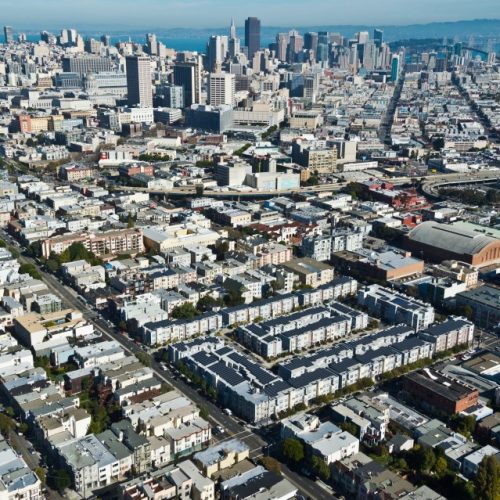
Community Microgrids incorporate local renewables into the existing utility grid, offering these significant advantages over centralized generation:

The Clean Coalition’s Community Microgrid Initiative will provide a standard methodology that any community can use to optimize and streamline the deployment of local renewable energy.
Rather than continuing the slow process of evaluating local renewable energy projects one at a time, the Community Microgrid Initiative will create a fast pathway to bring clean local energy online. Modeling large areas of the distribution grid makes it efficient to identify greater distributed generation opportunities and establish streamlined deployment plans. This systemwide approach enables large amounts of local renewables to come online in months rather than years.
Through a combination of advanced distribution grid modeling and cost scenario analysis, the Clean Coalition is creating a replicable and scalable method for deployment of local renewables.

The United States’ power system, built on century-old technology and approaches, was designed to deliver electricity from large, remote power plants across significant distances to the cities and towns where electricity is actually used. Now, however, locally sited renewable energy generation has become economically competitive with centralized generation and offers a superior approach for a vastly improved power system.
In addition, our centralized power system is highly vulnerable to extreme weather events, which are occurring more frequently. Since 1980, the US has experienced over 280 weather and climate disasters that had overall damages/costs of at least $1 billion (adjusted to 2020 dollars) — for a total cost of $1.875 trillion.
2020, the sixth consecutive year with 10 or more billion-dollar weather and climate disaster events in the US, set a new annual record with 22 events — much higher than the previous annual record of 16 events from both 2011 and 2017. These included 1 drought, 13 severe storms, 7 tropical cyclones, and 1 wildfire. At least 262 people died in the 2020 events, and total damages came to $95 billion.

Yet, utility executives and policymakers are reluctant to embrace local renewables due to fears that the existing power system cannot reliably integrate distributed energy generation. These grid reliability concerns have effectively limited local renewables to providing no more than 15% of peak power needs. Without empirical proof that the power grid can integrate greater amounts of local renewables in a cost-effective manner, this 15% limit will continue to slow the nation’s transition toward our clean energy future.
To overcome this reluctance, and to demonstrate the technical and economic feasibility of high penetrations of local renewables, the Clean Coalition established the Community Microgrid Initiative. The Community Microgrid Initiative is designed to achieve Community Microgrid demonstration projects that prove that local renewables connected to the distribution grid can provide at least 25% of the total electric energy consumed while maintaining grid reliability and power quality. Serving as models for modernizing America’s electrical system in the most intelligent manner possible, these Community Microgrid demonstration projects will help realize the Clean Coalition’s vision: From 2025 onward, at least 25% of all electricity generated from newly added generation capacity in the United States will be from local renewable energy sources.
Everyone understands that there is significant value to the resilience provided by indefinite renewables-driven backup power with Community Microgrids. The Clean Coalition has developed a methodology to quantify this value, VOR123.
Our VOR123 methodology makes it simple to quantify VOR by standardizing VOR for three tiers of loads — critical, priority, and discretionary loads — across all facility types:
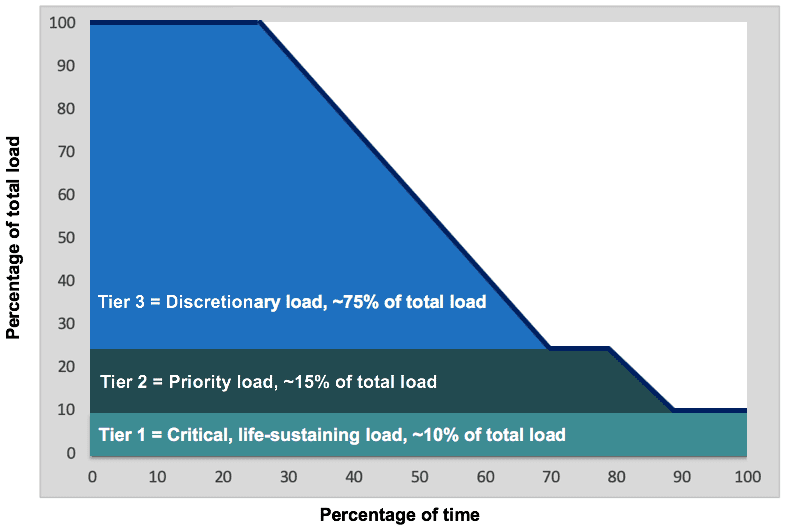
It’s time to modernize our energy system and move it into the present. What worked in the past is no longer viable. Our centralized power grid is so last century, as our friends at the World Business Academy explain in this excellent video:
The future is here — in the form of Community Microgrids.
For a Community Microgrid Initiative to be successful, all key community stakeholders must be aligned. These key stakeholders include property owners, residents, philanthropic funders, financiers, solution providers, utilities, policymakers, and municipalities. Participation by the local utility, one of the most important key stakeholders, is essential in order for a Community Microgrid to interconnect within the existing distribution grid.
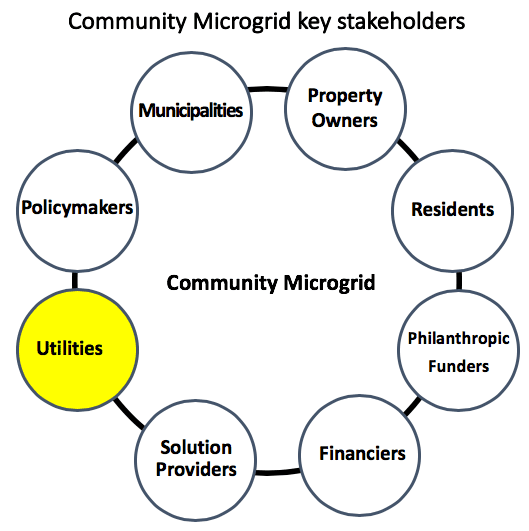

From 2025 onward, at least 25% of all electricity generated from newly added generation capacity in the United States will be from local renewable energy sources.
Learn more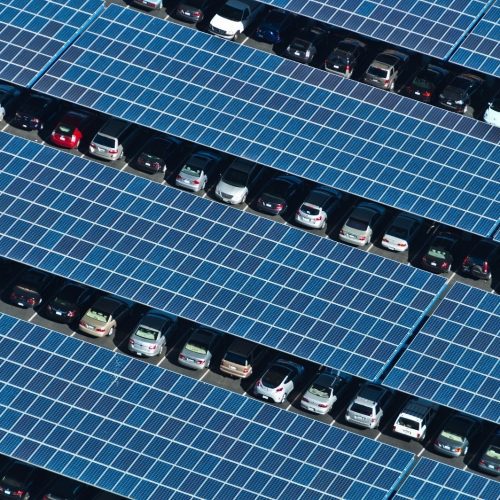
Learn about the Clean Coalition's Community Microgrid projects, showcases for a replicable and scalable model — and pathways to "25 by 25."
See our projects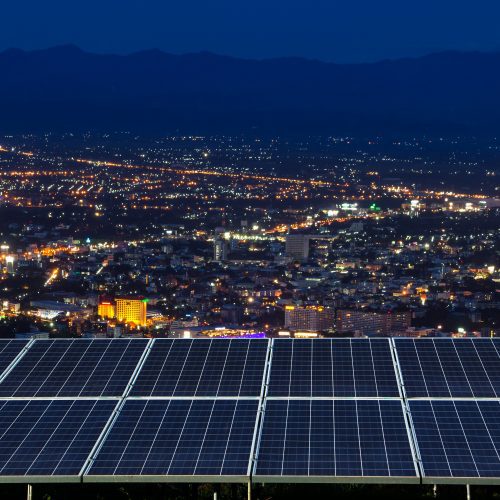
The Clean Coalition is focusing on Community Microgrid configurations that incorporate combinations of various factors.
See the Community Microgrid configurationsIn 2018 the California Legislature passed SB 1339, with the goal of facilitating the commercialization of microgrids across the state. A proceeding at the California Public Utilities Commission (CPUC) is tasked with implementing SB 1339. Since 2019, the Clean Coalition has been active in the SB 1339 proceeding, with the following filings:
The latest in clean local energy
Learn about our innovative projects and initiatives on our blog, and see what others are reporting about our important work.
Redwood Energy reports on Clean Coalition’s expert commentary, warning that AB 942 threatens rooftop solar affordability and undermines the clean‑energy transition
Read articleThis Clean Coalition hosted webinar took place on 27 June 2025 at 10:00 AM PST.
Read MoreThis blog post highlights the RGL Community Microgrid, which will provide clean energy and resilience to a disadvantaged community (DAC), utilize master metering, and serve as a critical model for future multi-unit housing (MUH) projects and master metering policies.
Read More